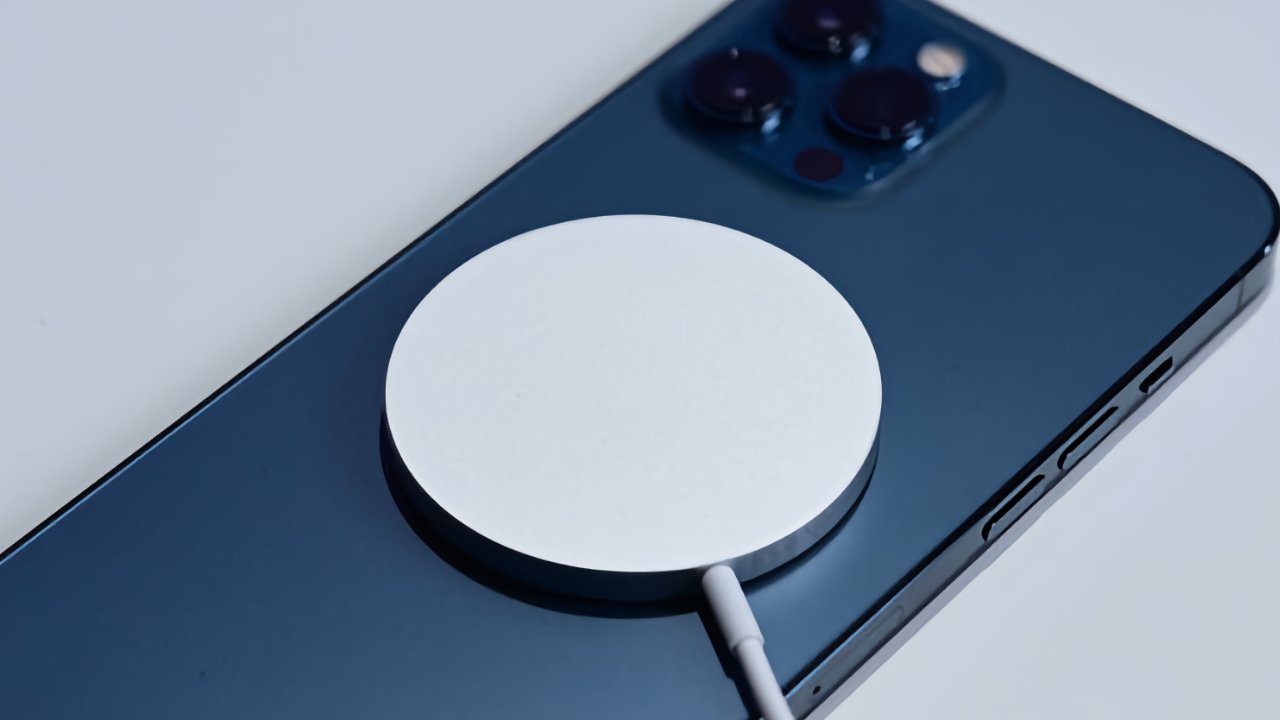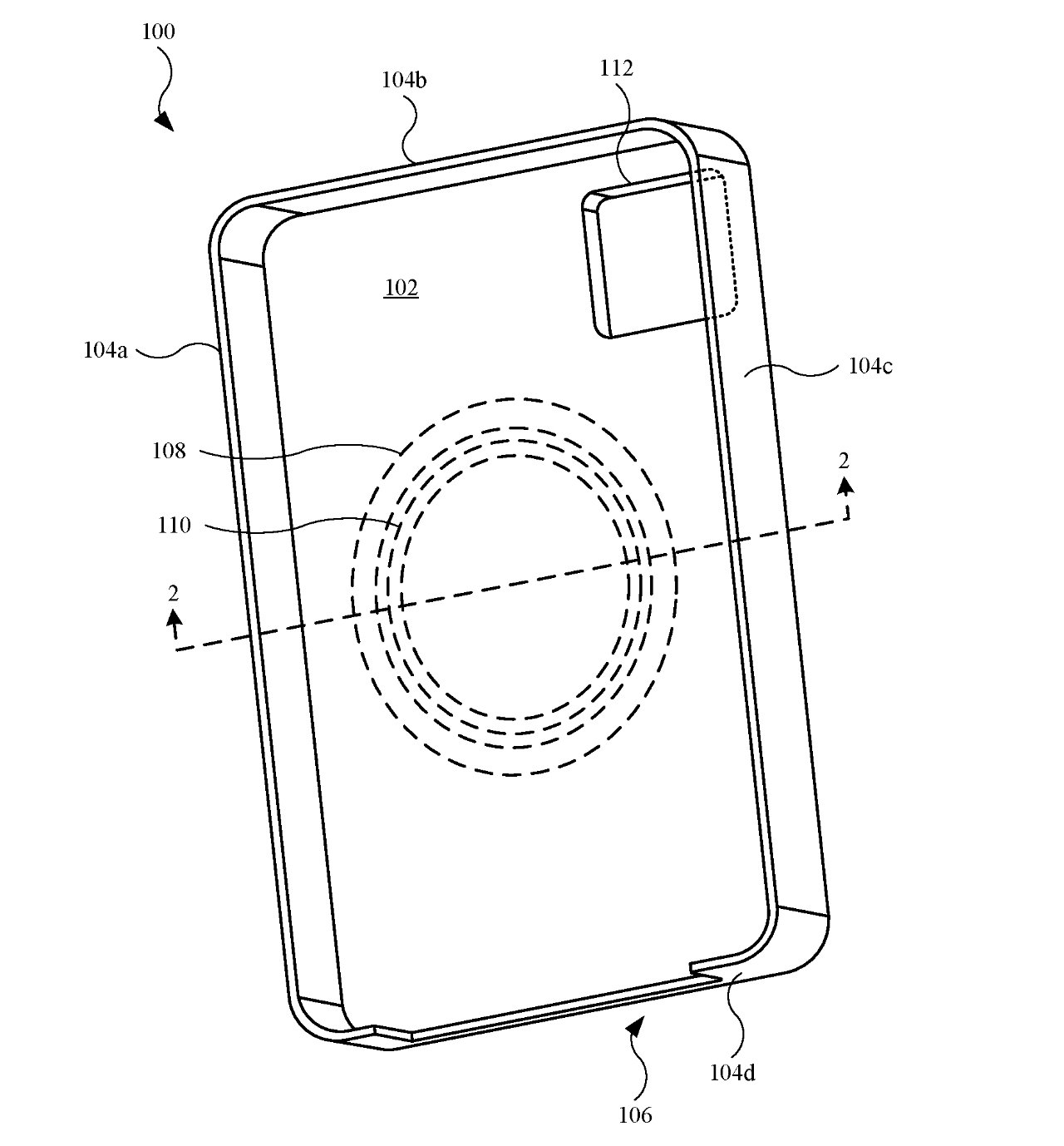Future MagSafe could transmit data and authenticate users through peripherals
Apple has been researching ways to advance MagSafe to carry data wirelessly, plus how to recognize and authenticate accessories when they are plugged in.

Right now, you can place a MagSafe-compatible iPhone onto a MagSafe charger, and it will charge. You can add an MagSafe iPhone case and the phone will still charge through it.
However, Apple says that at present, there are "some drawbacks" to how MagSafe works. "Accessory Devices That Communicate With Electronic Devices," is a newly-granted patent application that lays out the problem, and has solutions that mean making MagSafe smarter.
"For instance, some accessory devices inadvertently form a "heat trap" by virtue of their position on the electronic device," says Apple. "Moreover, advances in processor technology provide faster processing speeds for electronic devices, but generate more heat during operation."
Consequently, Apple says that, "several electronic devices" are designed to "throttle down" the processor when a certain temperature is reached. Depending on the device and on the temperature, some devices may shut themselves down.
"Accordingly, some users are required to choose between protecting their electronic device (with the accessory device)," continues Apple, "or permitting greater processing capabilities (without the accessory device protecting their electronic device)."
Apple proposes that the electronic device, such as an iPhone, contains "a magnetic field sensor configured to detect a magnetic field from a magnetic assembly external to the housing." In other words, the iPhone would be able to recognize when there is a MagSafe accessory attached.
More, the iPhone could "compare the magnetic field detected by the magnetic field sensor with a predetermined magnetic field." The iPhone could therefore distinguish between, say, a MagSafe charger, and a MagSafe iPhone case.
Knowing the difference, the iPhone's charging components could switch off charging at different temperatures. It would have a lower temperature threshold set for when the iPhone was in a case, for instance.
This suggests a comparatively crude recognition compared to more elaborate ones in the same patent application. This first level of recognition could presume a case or a bare charger, without explicit identifying data being passed to it.
Apple suggests a second level of recognition, though, in which data is passed through the MagSafe system in an accessory.
"The accessory device may further include a wireless communication circuit disposed in the bottom wall," says Apple. "The wireless communication circuit may be configured to transmit information to the portable electronic device subsequent to an authentication based upon the magnetic field vector."

Detail from the patent applications, showing MagSafe on a future iPhone that can read data from it
Apple implies that the MagSafe accessory could inform iOS of its tolerances, for instance, but the patent application is more concerned here with how data can be transmitted.
Once data can be sent via MagSafe, though, it opens up whole other areas of utility. This proposal already contains that reference to "an authentication based upon the magnetic field vector," for instance, and that could be expanded on.
An iPhone might first recognize that a MagSafe accessory is close, then look for any kind of data that could be on it. That data could comprise identification, meaning that through this same system, MagSafe could be used as a key.
These features may not be limited to the iPhone, either. Separately, recent rumors have claimed that the iPad will gain MagSafe.
Read on AppleInsider

Comments
Hopefully another port bites the dust soon, using the MagSafe connection would be nice.
If Apple reintroduces the AirPower wireless charing mat perhaps the iPhone, Watch and other devices could create a mini MagSafe network to talk and update while charging. Or add that type of support on the existing MagSafe Duo Charger?
Two so what. Do the calculation and post fact instead of posting FUD.
Estimates are that wireless charging will top out at 60% efficiency. Apple has MagSafe to better align the coils, so let's assume they're at the top end of that.
The iPhone 13 has a 12.41 Wh battery, and Apple estimates 15 hour battery life, so let's say one complete charge a day at that energy capacity. That seems a good ballpark for all iPhones, and not likely to change much in the near future.
So 12.41 watt hours of charge every day at 60% efficiency = 4.964 watt hours lost every day with MagSafe charging.
728 million iPhones (estimate 2017), then assuming static numbers and a total conversion over time to MagSafe and we have 3.613 GWh total energy loss per day for all iPhones eventually, 1,319 GWh annually.
Figures are obviously a bit fudged, but that's the kind of order of magnitude that we're talking about. Not a massive amount on a global scale, for comparison, US average per capita energy consumption is 73.677 MWh; so the global energy losses to wirelessly charging iPhones would be about the annual energy needs for 18,000 Americans. But still entirely unnecessary wastage at a time (currently) of some severe global energy supply disruption and environmental concerns that don't seem likely to ease any time soon.
I'll stick with the cable for as long as I can.
Talking about Apples MagSafe Wireless charging implementation, not Qi, though less efficient it takes less time and ultimately consumes less power. Maybe this is why Apple removed the 5W brick from the iPhone box? So if you want to save the environment and charge via cord looks like you need to invest in a higher wattage brick and USB C cable.
https://appleinsider.com/articles/21/12/16/tested-magsafe-charging-speed-versus-qi-usb-c-and-usb-a
To help put a GWh in perspective... https://www.energy.gov/eere/articles/how-much-power-1-gigawatt
My understanding is that the underlying charging technology of MagSafe and Qi is the same or very similar, save for the magnetic alignment and power rating. Less efficient at higher power transfer over a shorter time is still less efficient and will consume more power overall.
Never had the charger end fail, yet.
It could also allow chargers to steer the greatest charging power towards times when the power from utilities is least expensive and to utilize ML around device usage patterns, like smart thermostats do. Smart chargers could also send notifications and updates to other nodes, like your Home app, to let you know when charging is completed or at a certain percentage.